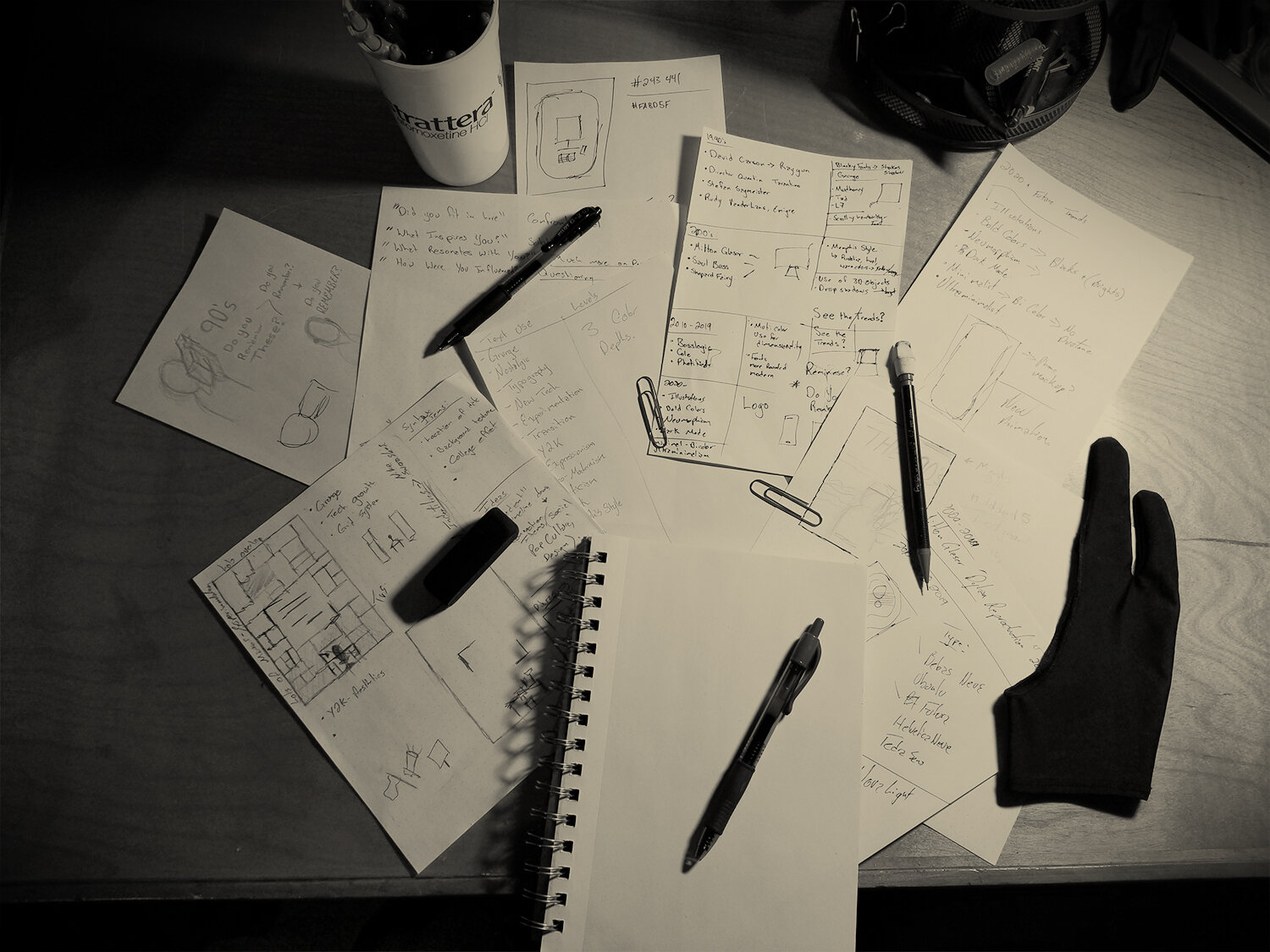Chris Godoy
Society as Trend
There exists constant talk and discussion about the growth and change in society and the mass media reaction to differences in everything we encounter. To acknowledge trends is to address a change in fashion, design, popularity, and culture. Personal trends are a matter of recreating an aesthetic feel to one’s own lifestyle. People choose trends based on what they perceive to be something new and welcomed by the society they belong to and reside in. Anne Lise Kjaer, a Trend-Sociologist working for a renowned trend management agency, Kjaer Global, addresses trends as being not some magical force but rather a curve which indicates a new influence that may or may not have the potential to reach a global audience.[1]
Design fads in particular seem to resurface every few years in new and innovative ways, a sleek and contemporary look. However, this trend growth can in a way reflect what society wants and values. Trends act as representations of communal thoughts and beliefs, portrayed by large corporate associations. The voices of powerful people, sites, and companies are enough to alter conscious as well as subconscious thoughts on trends.[2] Through this research, new design aesthetics are addressed in each new decade, how they interact with themes of societal desires and how they are viewed by everyday people. This helps to define what each person sees as ‘valuable’ to society.
Analyzing different time periods, the variations in trends, social media and combining it with a study of the psychology of color and the relation to a commodified trend helps to identify a reflection for societal needs or wants. Using Marxist theory, one’s view on society and how they interpret the world would demonstrate the connection between society and their thoughts on a topic. Measuring the time period of certain trends and how long they last informs of their impact, and how they can be used for a greater purpose.
[1] "Home." Kjaer Global. February 12, 2021. Accessed March, 2021. https://kjaer-global.com/.
[2] Behance. "2020 Design Trends." Behance. October 13, 2019. Accessed November 20, 2020. https://www.behance.net/gallery/86124977/2020-Design-Trends.
The Question
How can trends be experienced through the relationship between society, design, and mass media culture?
Through the Decades
Each fad, trend, change or growth in design had numerous levels of popularity. It demonstrates just how much our aesthetics are subjected to personal opinion and popular “vote”. The 90’s paved way for a very strong and influential growth in technology. It shaped the way designers were approaching new looks and aesthetics. Most big corporations were in the process of establishing themselves either in favor for or against the growing technology wave.
As time progressed into the next decade the trends grew to incorporate a rather new experimental nature of what can and cannot be done with technology. From the Corporation side we see a massive increase in progression for new technologies. As their growth changes so do the common workers lives and beliefs. Their styles, their interests are shaped by what is “new” and “different”.
Definition
Trend | A prevailing tendency or inclination. A general movement. A current style or preference. A line of development.
These are all definitions of what a trend is defined by, but none of these create an accurate idea of just how much a single trend can contain. They don’t explain just how many trends there are at any given moment, nor how quickly they change. This Thesis is about seeing these in the world, and understanding just how much one takes in, and how much it affects their choices. How many trends have affected the way we see not only society but how they have changed our own choices.
Source | "Trend." Merriam-Webster. Accessed April 05, 2021. https://www.merriam-webster.com/dictionary/trend.
By this point in time corporations have hired large groups of designers. This helps establish the “new brand” that further influences the working class. There are few designers who individually stand out in these contemporary times.
While their work may be recognized on a micro-scale, it’s hard to have a strong influence in a world where groups of designers flood the market and industry with their different corporate designs. Designs that help set trends and increase their profits.
Now, as a new decade begins an era of design for profit has taken over from the previous decade. Social media use slowly becomes the most prominent trend for many professions, and with it there is an obvious line drawn for the interests in society. The minimalist approach that began in the early 2000’s is in full effect as it creates what is now considered a modern/ futuristic look.
The Effect
In Marxist theory, there is a direct relation between the bourgeoisie and the working class.[1] This is further compounded when one understands that in this two-class system that is inherently integrated into Capitalist society, the Economic Base established in Marxist theory, is in fact related to some of the biggest corporations, (think Apple and the first iPod); their control of the superstructure grew when they implemented a new and growing want for their clientele using their growing technologies. In design, it launched the growing minimalist aesthetic that has been gaining favor over the last two decades.
[1] Thompson, Author Karl. "Marx: Key Ideas for AS Sociology." ReviseSociology. October 08, 2019. Accessed March 16, 2021. https://revisesociology.com/2015/11/22/marx-key-ideas-summary/.









